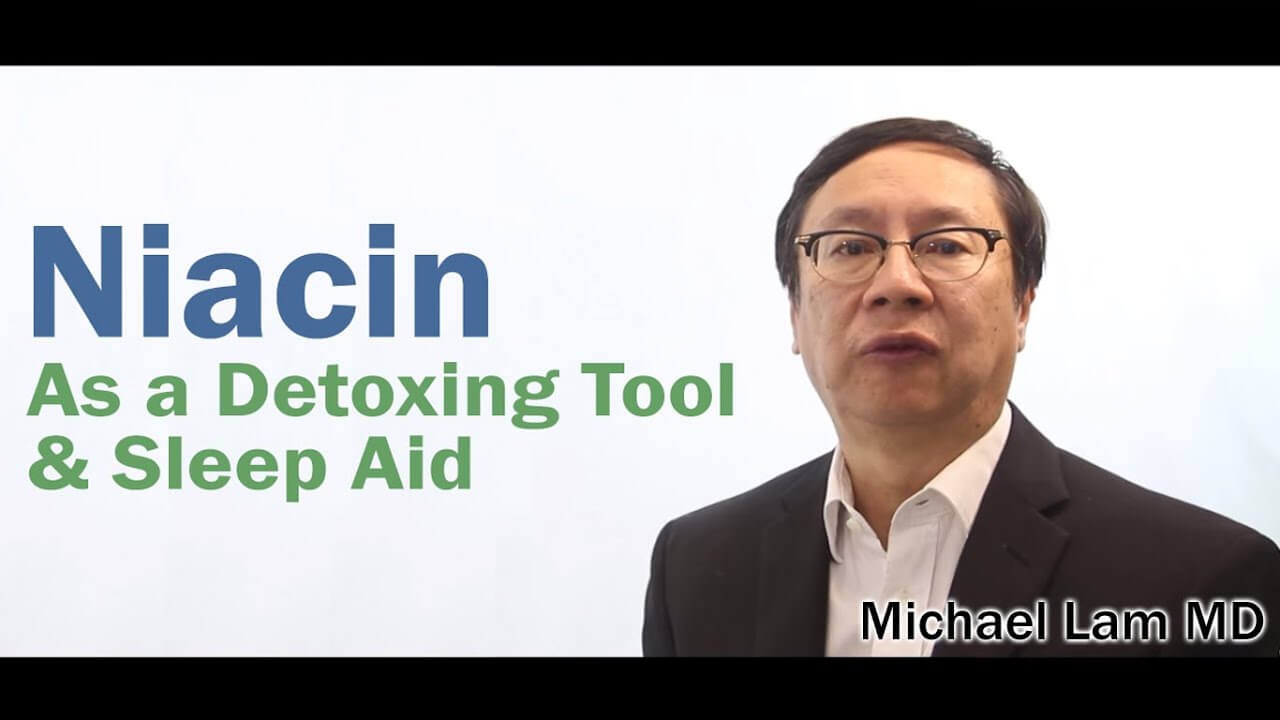
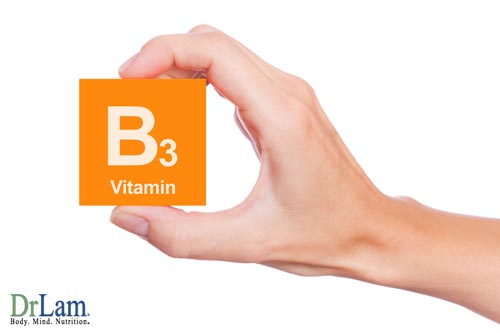 Niacin, better known as vitamin B3, is one of eight B vitamins and is commonly used for lowering cholesterol and triglycerides. However, there are other uses for niacin that are valuable for the Adrenal Fatigue sufferer or useful in chronic fatigue syndrome treatment, which we will discuss in further detail. When used correctly, niacin can be a very useful tool in supporting your journey to adrenal recovery. But let us first understand this beneficial vitamin and the role it can play.
Niacin, better known as vitamin B3, is one of eight B vitamins and is commonly used for lowering cholesterol and triglycerides. However, there are other uses for niacin that are valuable for the Adrenal Fatigue sufferer or useful in chronic fatigue syndrome treatment, which we will discuss in further detail. When used correctly, niacin can be a very useful tool in supporting your journey to adrenal recovery. But let us first understand this beneficial vitamin and the role it can play.
Niacin does not require a prescription, and it is a nutrient that everyone needs on a daily basis. Niacin is water soluble, so any niacin our body does not need is excreted in the urine, not stored in the body, meaning it needs to be consumed daily. On the flip side of this, there is no danger in consuming higher than usual doses, as compared to over dosing on pharmaceuticals where the effects can be detrimental to your health.
Bear in mind that although vitamins such as niacin are more gentle on the body, it does not necessarily mean that they are less effective than pharmaceuticals. In fact, used in combination with other vitamins, minerals, glandulars and/or herbs in a holistic chronic fatigue syndrome treatment, they can be just as effective, or even more so.
Depending on the unique circumstances of the person, varying amounts of niacin are required, and these dosages need to be monitored closely as they do have the potential to cause paradoxical reactions for the sensitive adrenal fatigue sufferer. In terms of deficiency, an insufficient supply of niacin in the diet can cause a multitude of problems such as nausea, skin and mouth lesions, anemia, headaches and tiredness.
When the body is chronically deficient in niacin, it can lead to a disease called pellagra, and is most often found in underdeveloped or developing countries with areas of widespread poverty and malnutrition. Common psychiatric symptoms of niacin deficiency include irritability, poor concentration, anxiety, fatigue, restlessness, apathy, and depression.
For those who desire to increase this valuable vitamin through dietary means, there are many different types of foods that have naturally occurring niacin which you could incorporate into your diet to help increase levels of niacin. Foods that have higher levels of niacin include leafy greens, crimini mushrooms, tomatoes, asparagus, red meat (especially in organ meats such as liver and kidneys), poultry, fish (tuna, salmon, anchovies), and also eggs.
The amount of niacin present in these foods, however, is only a fraction of the dose that is required to see significant change in your health if you are suffering from some form of niacin deficiency. To experience a noticeable difference in your health, much higher doses are required than what is available from diet alone and supplements are required.
Although niacin is considered a comparably safe and gentle vitamin, extreme care must be taken as niacin should only be taken as part of a structured protocol from an experienced healthcare practitioner, because it is also a detoxifying agent, which we will discuss further.
Let us now consider the other use of niacin that is helpful for those with chronic fatigue syndrome or adrenal fatigue syndrome. It is an undeniable fact of life that in the Western world we are living in a largely toxic environment. In North America alone, over 75,000 chemicals are produced, 3,000 of which go into our food supply.
 Changing our lifestyles with diet and exercise and choosing to use natural products in our homes and on our bodies are a great start towards detoxification. But this alone cannot completely eliminate the toxins that are stored in our bodies because fat cells within the body end up storing toxins that cannot be metabolized or eliminated by either diet or exercise. These fat cells have the ability to shrink, but they also have the ability to grow again. It is believed that between 400 and 800 toxins can be stored in our fat cells.
Changing our lifestyles with diet and exercise and choosing to use natural products in our homes and on our bodies are a great start towards detoxification. But this alone cannot completely eliminate the toxins that are stored in our bodies because fat cells within the body end up storing toxins that cannot be metabolized or eliminated by either diet or exercise. These fat cells have the ability to shrink, but they also have the ability to grow again. It is believed that between 400 and 800 toxins can be stored in our fat cells.
From a biological perspective, the liver is one of the most vital organs in the body. Physiological processes such as chemical balances cannot occur when its function is impaired. Significantly, the liver plays a pivotal role in the elimination of toxic substances from the body by converting them into water soluble byproducts for excretion.
In theory, the liver filters the blood of noxious substances such as pesticides, fertilizers, and other chemicals which are acquired from the environment and through diet. In many cases, when the liver is overloaded with toxins, this causes liver congestion, which diminishes the ability of the liver to detoxify.
Failure of the liver to filter wastes and toxic substances from the blood for elimination leads to excessive accumulation of toxins in the body, which causes physiological imbalances and cellular toxicity. Liver congestion can be addressed through liver flushes and cleanses to remove toxins from the blood.
In practice, cleansing of the blood improves the functioning of body cells owing to the improved supply of nutrients and clearance of wastes. Another method of addressing liver congestion is through niacin as a detoxifying agent.
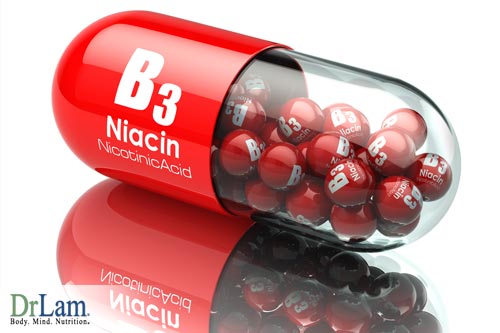 There are several more methods that can be used for detoxifying yourself from the buildup of toxins in the body, ranging from enemas to fasting and saunas. Within any method you choose, niacin can accelerate the detoxification process by rupturing the fat cells (lipolysis) that store the toxins, and thereby releasing them for elimination. Knowing the facts about niacin can have a tremendous, positive effect on your health.
There are several more methods that can be used for detoxifying yourself from the buildup of toxins in the body, ranging from enemas to fasting and saunas. Within any method you choose, niacin can accelerate the detoxification process by rupturing the fat cells (lipolysis) that store the toxins, and thereby releasing them for elimination. Knowing the facts about niacin can have a tremendous, positive effect on your health.
It is important to learn the facts about Niacin before beginning supplementation. Generally, one would start with a low dose of niacin (the plain niacin that causes flushing), 50 milligrams or so depending on the individual’s level of tolerance, and gradually building to a maximum of 500 milligrams. Higher doses have been used for those who are gravely ill from drug use or chemical toxins. The level of tolerance is determined by how intensely (that is, the duration) the flushing persists in the individual.
The toxins that are released from the fat cells by the niacin need to be quickly eliminated from the body, or it may cause serious damage to the liver, kidneys and other organs, including the brain. Many people do not know this about Niacin supplementation. The elimination step cannot be overstated, as when the toxins are not efficiently and speedily eliminated, the toxins can then enter the brain cells where they become very difficult to remove.
There are two main methods for elimination, either through the skin, which is the body’s largest organ, or through the gastrointestinal tract with the assistance of charcoal for absorption. After ingesting the niacin, the healthy person should begin an exercise regimen that causes sweating, and then enter a sauna to literally sweat it out for 30 to 45 minutes.
It does not matter what type of exercise one engages in, in so far as there is sufficient perspiration. Those who are weak should NOT embark on this without supervision, as will be discussed later, as this may cause more harm than good.
Consuming activated charcoal to assist with the elimination of the toxins through the gastrointestinal tract will further assist with the speedy removal of the toxins. The charcoal works by absorbing the toxins (that is, hitching to electrons of toxins) and removing them through bowel movements or via urine.
 Insomnia can affect your overall health and well-being and can negatively impact your ability to function on a daily basis. A good night’s sleep where you wake feeling fully rested is something approximately 30 million Americans find elusive. People who suffer from insomnia can suffer from fatigue, difficulty paying attention, and difficulty with focusing, mood swings, and irritability. Those who opt for pharmacologic sleeping aids may become dependent on them as they believe they cannot fall asleep without their continual use – in these situations non-pharmacologic interventions are preferred.
Insomnia can affect your overall health and well-being and can negatively impact your ability to function on a daily basis. A good night’s sleep where you wake feeling fully rested is something approximately 30 million Americans find elusive. People who suffer from insomnia can suffer from fatigue, difficulty paying attention, and difficulty with focusing, mood swings, and irritability. Those who opt for pharmacologic sleeping aids may become dependent on them as they believe they cannot fall asleep without their continual use – in these situations non-pharmacologic interventions are preferred.
There are four stages to a typical sleep cycle, with stages one and two occurring as you begin to fall asleep and progress into a light sleep when your breathing and heart rate slow down. The following two stages are known as deep sleep, and this is the stage where the most restorative sleep occurs, when the brain is active and dreaming and the body is immobilized.
In general, 90 minutes is required from the time of falling asleep to the time of entering into the deep or rapid eye movement (REM) sleep. Every 90 minutes the body will cycle through these stages and enter in and out of REM. REM sleep is necessary as this is where the body enters into deep slumber and is energized, helping one stay focused and active during the waking hours.
There is evidence to suggest that vitamin B3 can assist with sleeping, which means that another unique property about niacin is its ability to be a wonderful and natural sleeping aid via its interaction with tryptophan. Niacin also works with the adrenal gland to make stress-reducing hormones, thereby helping the body relax by reducing anxiety and depression.
L-tryptophan is an essential amino acid that helps to improve sleep and reduce stress. It is directly involved in the production of both serotonin (which is known to improve mood and mental health) and melatonin (which is known to improve sleep), as it acts as a precursor to these neurotransmitters by providing the building blocks. L-tryptophan has even been shown to improve the recollection of dreams. Naturally-occurring sources of tryptophan include most high protein foods (such as red meat, fish, and chicken) and high carbohydrate foods (such as grains, bread and pasta). For those on a low carbohydrate and/or gluten free diet, supplementation with tryptophan maybe needed.
What is the relationship with tryptophan and niacin? Essentially, tryptophan converts to niacin in the body. However, the exact mechanism by which niacin improves sleep is unclear. It has been suggested that low niacin levels disrupt the firing of brain neurons, which affects the sleep-wake cycle.
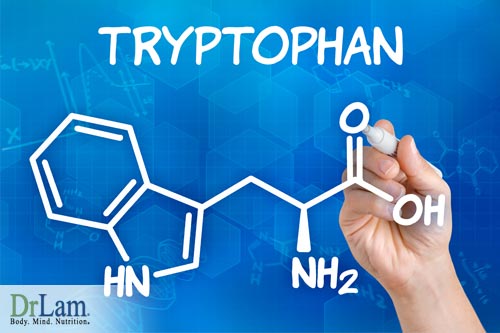 Approximately 30 minutes prior to going to bed, taking a small amount of niacin (dosage can vary widely between 25 milligrams to 250 milligrams, depending on your individual circumstances) can significantly reduce the time it takes to fall asleep. Ideally, the amount required would be the minimal dosage to induce sleep in the individual. As always, consulting your physician and taking niacin under medical supervision is advised.
Approximately 30 minutes prior to going to bed, taking a small amount of niacin (dosage can vary widely between 25 milligrams to 250 milligrams, depending on your individual circumstances) can significantly reduce the time it takes to fall asleep. Ideally, the amount required would be the minimal dosage to induce sleep in the individual. As always, consulting your physician and taking niacin under medical supervision is advised.
When niacin is used in conjunction with proper sleep hygiene, this will increase the probability of falling asleep and staying asleep without the use of pharmaceuticals. Sleep hygiene entails avoiding the use of computer or television screens prior to sleeping, and also avoiding excessive exercise two or more hours before bedtime.
Individuals who are sensitive to caffeine should also avoid the consumption of coffee or caffeinated teas after midday. Tobacco use and alcohol consumption can also affect your ability to sleep. The environment and atmosphere in which one sleeps is also an important consideration. Comfortable bedding, the right temperature, noise control, and lighting also play a role in assisting you in falling and staying asleep.
Individuals who suffer from chronic insomnia should also consider seeking medical attention to rule out other possible underlying health issues such as sleep apnea.
There are a number of different ways to go about niacin supplementation: niacin, niacinamide, and inositol hexaniacinate, which we will discuss in turn.
Plain niacin quickly dissolves, and will almost always cause a flush in everyone who takes it in large enough quantities, especially in the earlier stages of taking this vitamin. Flushing refers to a visible skin reaction (redness, that is much like blushing) that typically begins in the face and travels through the upper body and sometimes reaches the legs. One may also feel heat, itching, and tingling as the small vessels near the surface of the skin are undergoing dilation; known as vasodilation.
Niacinamide, on the other hand, does not cause a flush in people, and is preferred by those who find great discomfort in experiencing a flush. Niacinamide is the type of niacin that manufacturers typically use in a multivitamin or supplement preparation to avoid the flushing sensation.
However, the drawback with this form of niacin is that in very high doses (for example, 5000 mg), it is more likely to cause nausea. Another disadvantage is that niacinamide does not help with correcting levels of cholesterol as a ‘side-effect,’ unlike the other two forms of niacin. The correcting of cholesterol or lipid benefit refers to the lowering of the bad cholesterol, and simultaneously raising HDL and lowering triglycerides.
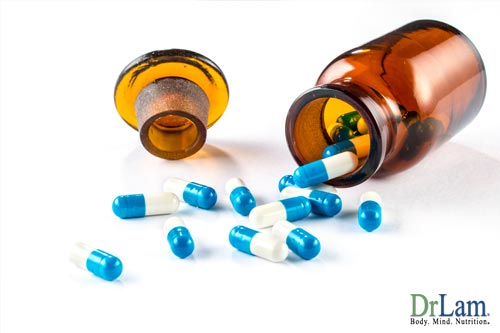 Inositol hexaniacinate is probably the most popular no-flush niacin (there are always rare exceptions where a flush does occur), and it works almost as well as niacin or niacinamide. It is slightly more expensive than niacin or niacinamide, and it will also help with correcting cholesterol levels as a side benefit. Inositol hexaniacinate is considered the best of both worlds – no flush and yet still retaining the lipid benefits.
Inositol hexaniacinate is probably the most popular no-flush niacin (there are always rare exceptions where a flush does occur), and it works almost as well as niacin or niacinamide. It is slightly more expensive than niacin or niacinamide, and it will also help with correcting cholesterol levels as a side benefit. Inositol hexaniacinate is considered the best of both worlds – no flush and yet still retaining the lipid benefits.
Niacin is best when taken in combination with a balanced B vitamin complex (50 milligrams is recommended, if purchasing 100 milligram-sized tablets, the tablet can be broken in half). The amount of niacin will vary from person to person, based on their height, weight, lifestyle, and gender. The recommended dosage is between 200 to 500 milligrams three times a day, working up from smaller dosages at first. Further considerations are required based on whether the person is sick or well and their current stress levels.
The other concern that people are anxious over when learning about niacin therapy or considering it, besides the physical discomfort of flushing, is the liver function tests and the results thereof. High doses of niacin can increase readings in liver function tests.
However, it should be noted that elevated liver function tests are a sign of increased liver activity, and not necessarily a sign of liver pathology.
Many doctors who do not have the education or know about niacin therapy are unaware of this vital distinction. Therefore, it is imperative that the tests need to be properly interpreted by a doctor who is familiar with the workings of niacin, and does not cause undue alarm to the patient, who in all likelihood is already very concerned and anxious about their health status. The stress of this misinterpretation of test results can have the potential to cause an adrenal crash for the adrenal fatigue sufferer, who is highly sensitive to news pertaining to doom and gloom in relation to their health.
More often than not, those who take the proprietary types of niacin that a doctor would prescribe are the people who are having elevated readings. Also, people who have a history of alcohol use should also expect high readings, as the liver is the detox gland when the alcohol is detoxified from the body.
The use of niacin in a setting of AFS largely falls under two categories, as a sleep aid and as a detoxification agent. Its use as a lipid support agent is limited due to the large dose required, which can have unpleasant side effects.
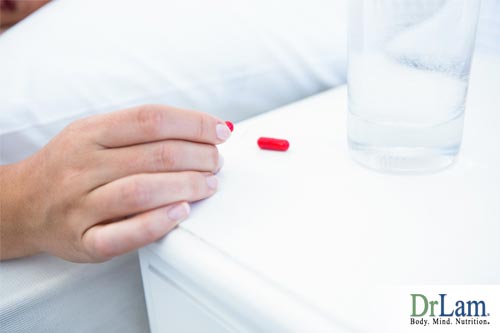 As a sleep aid, niacin and its derivatives do have some supporting functions. The dosage varies greatly from person to person. It is usually best used in conjunction with other sleep aids and mood stabilizing agents including GABA, melatonin, 5-HTP, etc. and not as a single therapeutic agent. The liquid sublingual form is usually preferred as it is easier to titrate, and absorption into the bloodstream is fast.
As a sleep aid, niacin and its derivatives do have some supporting functions. The dosage varies greatly from person to person. It is usually best used in conjunction with other sleep aids and mood stabilizing agents including GABA, melatonin, 5-HTP, etc. and not as a single therapeutic agent. The liquid sublingual form is usually preferred as it is easier to titrate, and absorption into the bloodstream is fast.
As a lipotropic, it encourages the export of fat from the liver, and is therefore a detoxifying agent. However, its use should be closely supervised to avoid retoxification reaction. This is especially true in advanced stages of AFS where the liver is sluggish and clearance is compromised.
Excessive niacin, along with heat and exercise, can in fact trigger adrenal crashes. The liquid form is best for easy absorption. It is also best used in conjunction with other liver clearance aids including milk thistle in both fermented and unfermented forms, such as glutathione, lipoic acid, etc.
Niacin has numerous benefits, and we have only uncovered the tip of the iceberg in discussing correcting your cholesterol levels, use as a detoxification agent, and also as a natural sleeping aid. Drug companies cannot patent niacin, and it is therefore of little interest to them, but it is certainly a vitamin to consider. It is important to bear in mind that all of the B vitamins work synergistically with one another, which means you will obtain better results when niacin is taken in conjunction with a B-complex multivitamin.
There is no study to show this, but we do notice that for people who have a 'Heaty" type body, as defined by traditional Chinese medicine ( TCM), tend to have them occur more frequently.
"Thanks to you I feel much younger"
"I am feeling well- taking the supplements you suggested. Thank you for your help-You gave me the energy at 84 years to move from a condo to a large modular home and I enjoy doing Housework again and walking- without a cane around this mobile home park and I also drive a car.. Thanks to you I feel much younger."